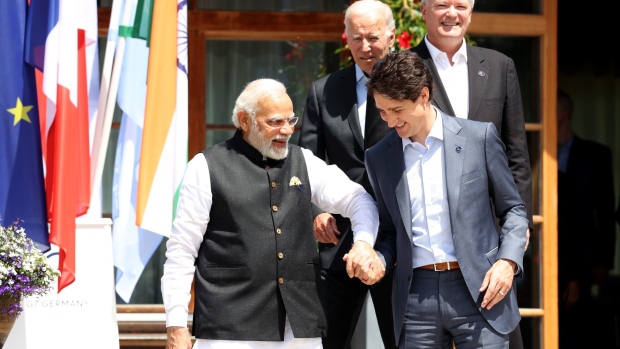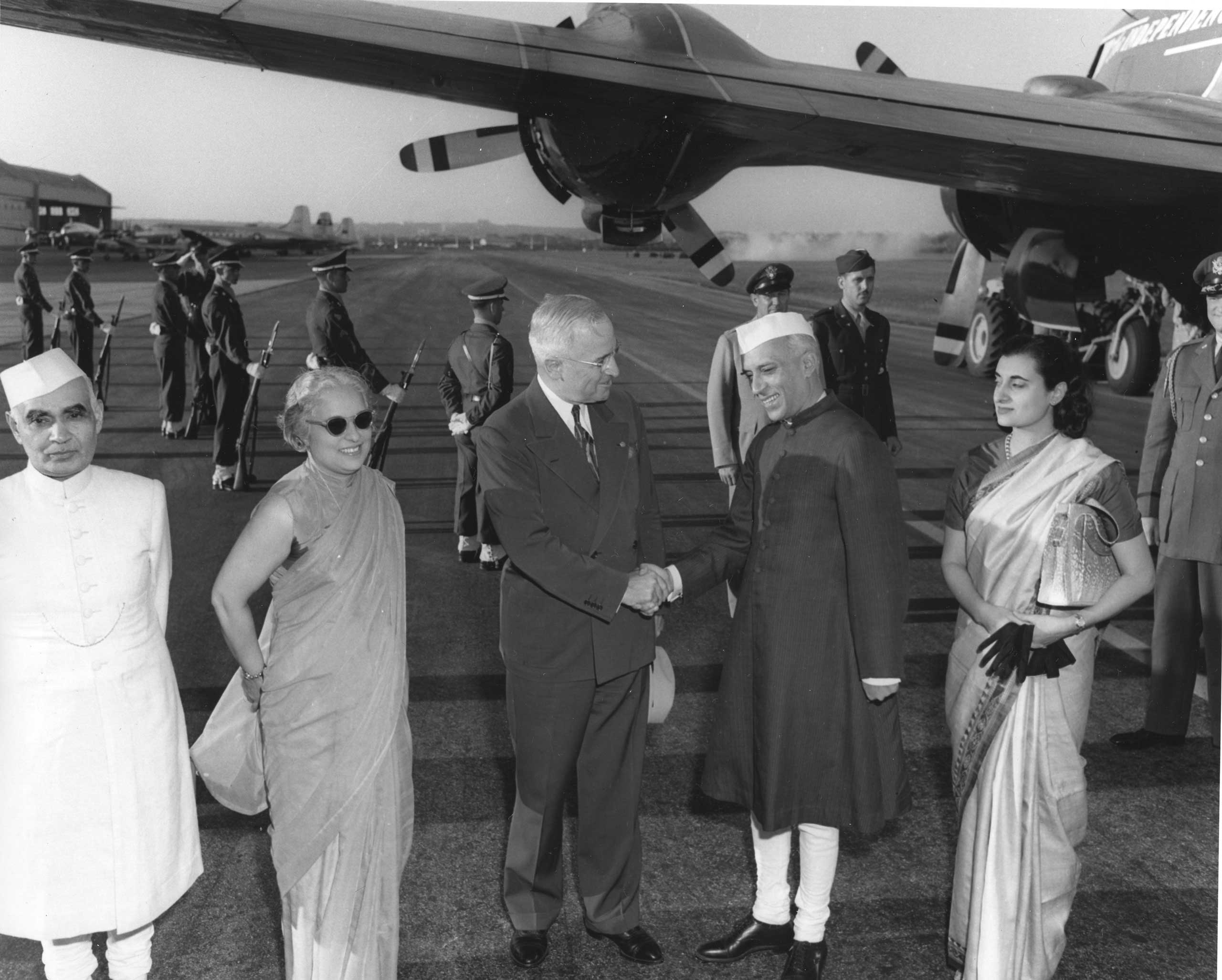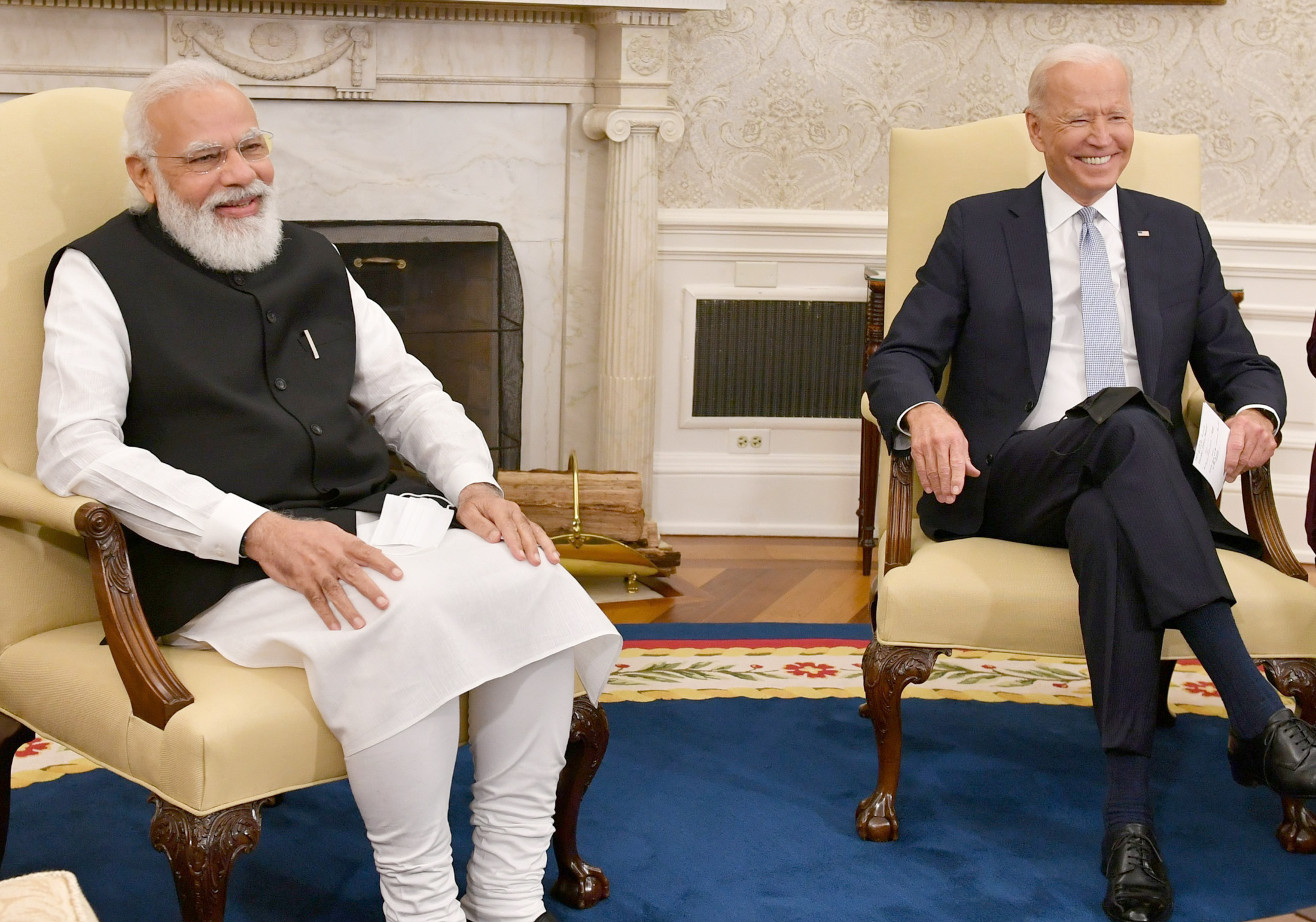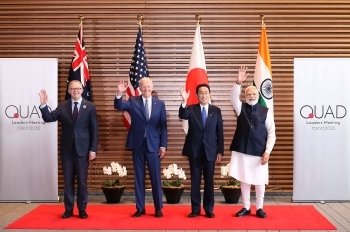The US-India-Canada Triangle, Strategic Alliances and Diplomatic Dilemmas; But Who Will The United States Choose?
The dynamics between the United States, India, and Canada have been cast under the spotlight. Former Pentagon official Michael Rubin's insights on this complex interplay shed light on the shifting sands of international relations. But what limits any US Alliance With India Over China?

If the United States were compelled to make a choice between its two allies, it would undoubtedly favour India,” former Pentagon official Michael Rubin stated regarding the recent India-Canada dispute.
He emphasized that the relationship with India holds paramount strategic importance compared to Canada, and thus, siding with India is a natural choice.
Rubin likened Canada’s confrontation with India to “an ant challenging an elephant,” highlighting India’s significance as the world’s largest democracy and its strategic importance in matters concerning China and the Indian Ocean basin.
Regarding Canadian Prime Minister Justin Trudeau‘s actions and his dwindling approval ratings compared to opposition leader Pierre Poilievre, Rubin predicted Trudeau’s tenure might be short-lived.
He also expressed confidence in the ability to rebuild the US-Canada relationship once Trudeau departs.
I suspect that the United States doesn’t want to be painted a corner to choose between two friends. But if we have to choose between two friends, increasingly, we’re going to choose India on this matter, simply because Nijjar was a terrorist, and India is too important. Our relationship is too important,” Rubin said.

Responding to the question of whether the US would publicly intervene in the matter, Rubin pointed out that Canada faces more significant risks than India due to its stance.
He stressed that India is far more critical strategically and, in light of growing concerns related to China and the Indian Ocean region, is a more crucial partner for the United States.
The India-Canada relationship soured after Trudeau accused India of involvement in the killing of Khalistani terrorist Hardeep Singh Nijjar, a claim India vehemently denied.
Rubin also emphasized that Nijjar, allegedly killed by his former associates, was not a suitable figure for invoking “human rights” and cited his involvement in multiple attacks and the use of a fraudulent passport to get into Canada.
Justin Trudeau might want to make this a case of human rights. The fact of that matter is, that Nijjar isn’t a model one wants to use for human rights. Nijjar may have been involved in the assassination of a rival Sikh leader, just a year ago. At the same time, he has blood on his hands through multiple attacks. He entered Canada with a fraudulent passport. And the fact of the matter is this is no Mother Teresa, we are talking about.
Rubin further asserted that many in the US and Canadian security communities believe that Trudeau’s actions have gone too far.
In response to whether Trudeau had turned a domestic political issue into a foreign policy matter, Rubin contended that Trudeau’s actions were short-sighted and politically motivated, primarily driven by his re-election campaign and the presence of Sikh activists in key electoral districts.
He cautioned against sacrificing long-term diplomatic relationships for short-term political gains.
However, the fact is that will the US take the chance to upset India over Canada; What limits any US alliance with India over China?
The ongoing geopolitical struggle between the United States and China has expanded its front lines from the United Nations to the South Pacific islands. Amid this global power play, one nation stands out as pivotal to American interests in the Indo-Pacific region: India.
The United States has been actively courting India in a bid to strengthen its position in this crucial region. However, the alliance between the two nations faces several challenges due to historical distrust, India’s independent foreign policy stance, and the complex nature of global diplomacy in the 21st century.

Historical Challenges
The relationship between the United States and India has long been characterized by distrust and differences.
This historical legacy continues to influence the relationship but is not the only obstacle; Indian foreign policy has been marked by unpredictability since its independence in 1947.
Indian leaders have oscillated between alignment with Washington and pursuing their own path, sometimes even engaging with American adversaries.
This inconsistency has made India a geopolitical “swing state,” capable of shifting the balance of power in Asia and global competitions.

The Modern Geopolitical Chessboard
As the world divides into opposing camps centered around the US and China, India is once again pressured to take sides.
However, Prime Minister Narendra Modi’s government approaches this dilemma differently from past leaders’ Modi views China as a direct threat to India’s national security, aligning with the Biden administration’s strategy to counter China’s influence.
Key Security Concerns
One of India’s primary security concerns revolves around longstanding territorial disputes with China along the Himalayan border. These disputes have resulted in conflict, including a war in 1962, and continue to fuel tensions today.
China’s assertiveness in pursuing its territorial claims, similar to its actions in the South China Sea, has driven India closer to the United States.

The Rise of the Quad
A significant indicator of the deepening U.S.-India relationship is India’s participation in the Quad, a security partnership involving the US, Australia, Japan, and India.
Initially, Indian leaders were skeptical of the Quad’s emergence, fearing it might evolve into an Asian NATO. However, Modi has increasingly embraced the Quad, and it has gained prominence under the Biden administration.
Economic Cooperation
Beyond security, the US and India have also strengthened economic ties.
India joined Biden’s Indo-Pacific Economic Framework, signaling its willingness to reduce reliance on Chinese goods.
This shift has led to an increase in iPhone shipments from India-based factories, reflecting a mutually beneficial economic realignment.
India’s Independent Choices
Despite growing cooperation with the U.S., India continues to forge relationships and make choices that may not align with American interests.
Modi’s travels reflect this independence, as he participates in both Quad summits and meetings with leaders from Russia, Iran, and China in the Shanghai Cooperation Organization, an entity often seen as anti-Western.
Divergent Stances on Russia
Modi’s approach to Russia’s invasion of Ukraine highlights India’s prioritization of its national interests over alignment with American wishes.
While India did criticize Russia’s actions, it did not take a harder line, maintaining its important military, economic, and energy ties with Moscow.

Differences on China
Even on the shared concern of China, India and the US have differing strategies. While both worry about China’s ties to Russia, they approach this challenge differently.
India seeks to maintain its links to Moscow to influence Russia’s relationship with China and prevent coordinated actions against India.
Adaptability in a Complex World
India’s foreign policy reflects the evolving nature of 21st-century global diplomacy, characterized by multipolarity rather than binary alliances.
Hence, Washington must adapt to this reality and pursue its foreign-policy goals without relying solely on traditional alliances.
The Last Bit, The statements by Michael Rubin, a seasoned observer of international affairs, indicate the intricacies of global diplomatic affairs.
India’s role in the U.S.-China rivalry is crucial but complex. While the US seeks to deepen its alliance with India to counter China’s influence, India’s independent foreign policy choices and focus on its national interests may lead to occasional misalignments.
However, in the face of a rising China, the United States needs all the friends it can find, regardless of the path it takes to secure them.




